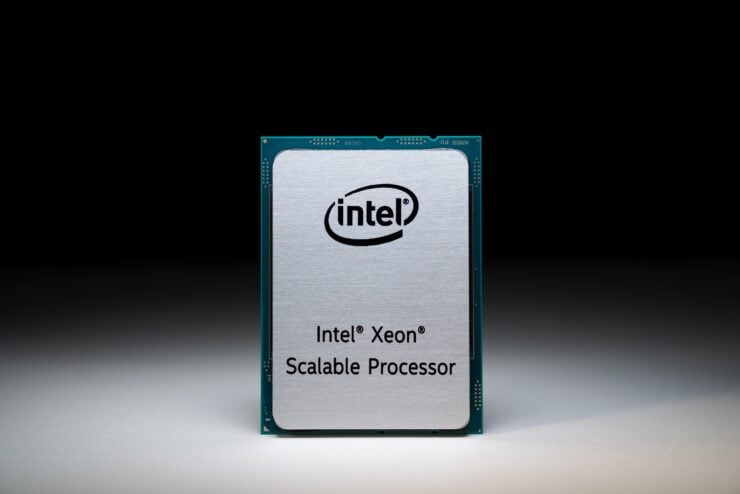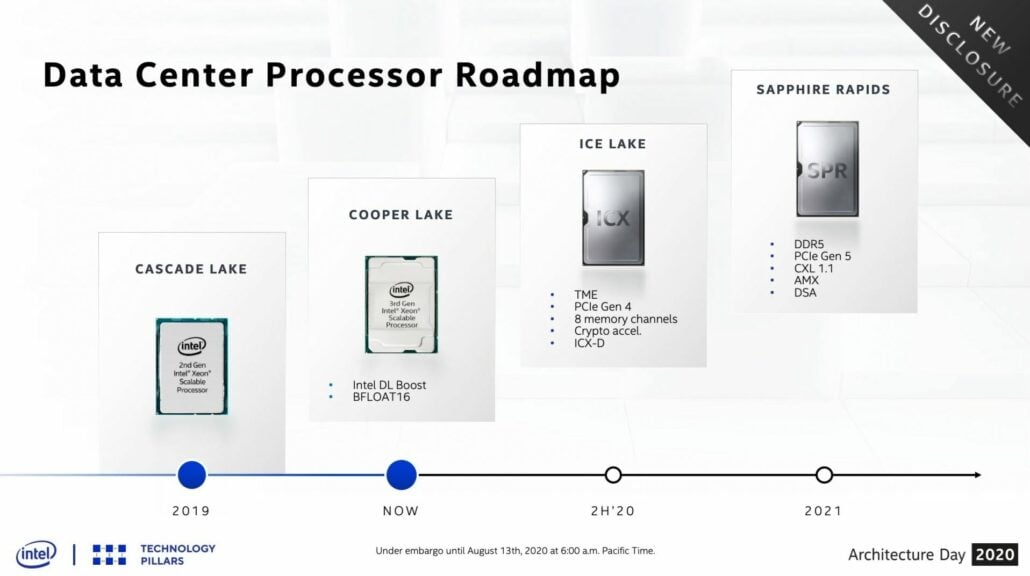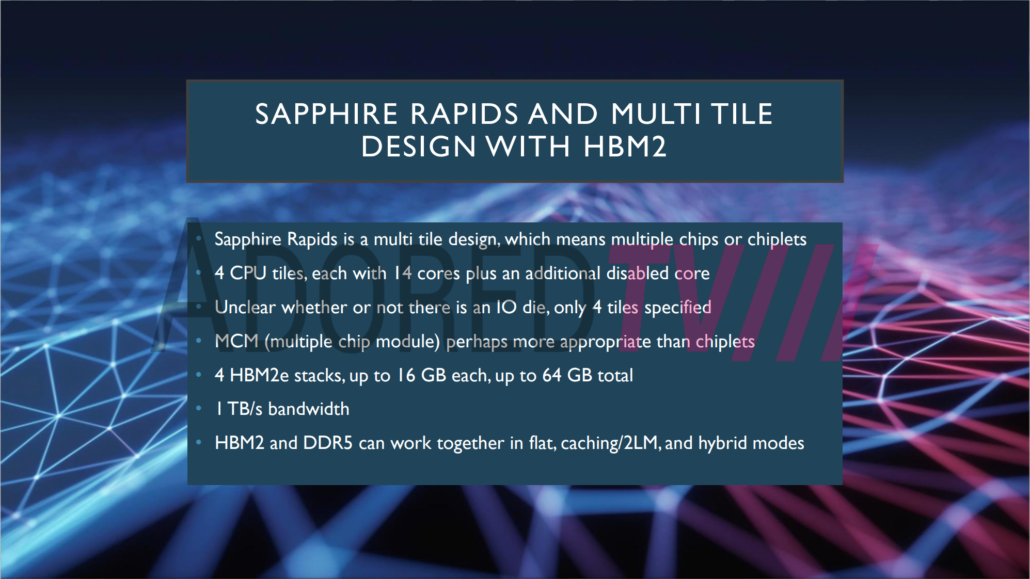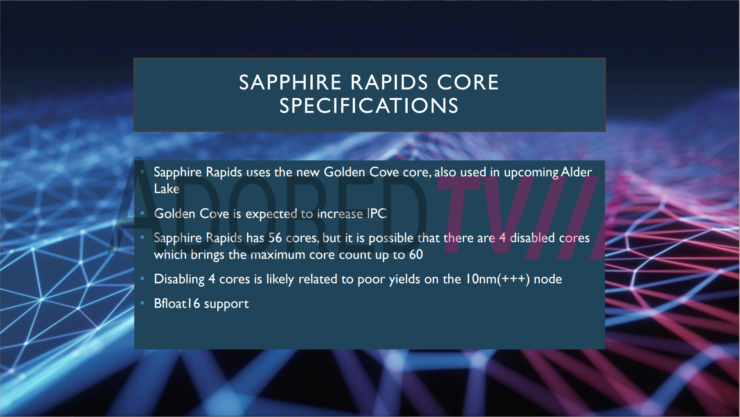
What appears to be the medium-term roadmap for Intel’s Xeon platform has leaked out (via Videocardz). It addresses not only the company’s plans with Ice Lake but includes Sapphire Rapids as well (in all its variants). According to this Roadmap, Ice Lake is landing at the end of the first quarter of 2021 while Sapphire Rapids will take over by Q4 2021. This would be the shortest span ever for an Intel Xeon product but one that we believe is the correct choice for Intel to remain competitive.
Intel Xeon 2020 through 2022 roadmap leaked: 10nm Ice Lake to have a short run of just two quarters before 10nm SuperFin Sapphire Rapids takes over
The current architecture available in Xeon flavors is Cascade Lake and this will not change at all this year. Intel Ice Lake is on Intel’s roadmap in three distinct platforms: D50TNP Tennesse Pass, which is their dense category for optimized systems with parallel workflows (think HPC, AI etc). It will feature 24 DIMMs and 4 module types. It will land in Q2 of 2021. At the same time, we will see American Pass (more famously known as Whitley Lake) featuring 24 DIMMs. On the mid-end Xeon side of things, Intel platform M50CYP (Coyote Pass) will appear with 32 DIMMs and up to 16NVDIMM (non volatile memory), 8 PCIe slots and up to 24x lanes. There is also mention of a 1S Performance segment which will likely end up being Ice Lake as well.
Intel Ice Lake is based on the vanilla 10nm design and is missing a lot of features that Jim Keller helped implement. Sapphire Rapids is the high-performance architecture from Intel that you want to look out for and the earliest it will be available will be in Q4 2021. This also implies that the company is planning to cannibalize ICL sales and basically just run it for the shortest possible time. This makes sense because not only is SPL significantly more competitive to AMD parts, ICL will only be holding the fort while the company can ramp up its 10nm SuperFin (Enhanced) yields to volume. Denali Pass is the first Sapphire Rapids platform (also known as Eagle Stream) that will be succeeding Tennessee Pass in 2021. It will feature PCIe Gen 6 and PVC support (Ponte Vecchio) which is Intel’s own GPU.
Sapphire Rapids platform to replace Whitley Lake is not ready yet but the one to replace Coyote Pass is ready. It will be called Fox Creek Pass (Eagle Stream) and will have up to 32 DIMMs, 16 NVDIMMs, 8 PCIe slots, and up to 24 lanes.
Intel Sapphire Rapids embraces MCM design, HBM2 memory, up to 56 cores based on 10nm+++ process and 400-watt TDP
At their Architecture Day 2020, Intel confirmed the launch of its upcoming Sapphire Rapids CPU platform in 2021. Sapphire Rapids will feature support for DDR5 memory and PCIe 5.0 and will truly be a “next-generation” data center chip with the addition of the CXL 1.1 interconnect. The company has also plans to release the OneAPI (going gold) later this year which should tie up their master plan of a unified datacenter ecosystem quite nicely.
While the company did not reveal the exact process Saphire Rapids is based on, we can infer that it will likely be based on the company’s 10nm SuperFin Enhanced process because it succeeds Ice Lake processors (which are based on vanilla 10nm) and because it uses TME (Total Memory Encryption is an architectural design that encrypts the memory completely so even if someone dumps the RAM – they would just get garbage data). This feature is also present in Tiger Lake – which is based on 10nm SuperFin – which lends credence to Sapphire Rapids being based on the same (or more advanced) process as well.
AMD has already promised new memory along with new capabilities for the Genoa lineup which would include support for DDR5, PCIe 5.0, and more. Intel plans to tackle AMD in two key departments with Sapphire Rapids, one being increased per core output (performance) and decreased TCO($) per core. With CXL and a complimentary Intel ecosystem in place, single-threaded performance alone is not enough to justify a transition to AMD parts – or at least that is what Intel is rationalizing.
According to the slides prepared by AdoredTV, the Sapphire Rapids constructions will consist of 4 CPU tiles with 14 cores each. There will apparently be a disabled core present in each tile as well (likely due to yield issues) which means that the overall core count could extend to 60 cores if yields improve significantly. It also does not appear that Intel’s design will use an IO die – considering their past philosophy with mesh architectures.
The Saphhire Rapids CPUs will contain 4 HBM2 stacks with a maximum memory of 64 GB (16GB each). The total bandwidth from these stacks will be 1 TB/s. According to Matthew’s source, HBM2 and GDDR5 will be able to work together in flat, caching/2LM and hybrid modes. The presence of memory so near to the die would do absolute wonders for certain workloads that require huge data sets and will basically act as an L4 cache.
Moving on, we learn that Sapphire Rapids will ship with 80 PCIe 5.0 lanes on the flagship parts and up to 64 lanes on the rest. CXL is supported and DDR5 memory up to 4800 MHz will be present as well. The channels remain at 8 channels per CPU. Optane memory is supported as well, naturally. The source also confirms the use of Golden Cove architecture (which is also present in Alder Lake) and will significantly increase IPC over ICL (which is not based on SuperFin by the way). Bfloat 16 will be supported as well for AI-related workloads and initially, we will only get the 56 core versions.
The source also mentioned some caveats associated with Sapphire Rapids. The TDP of the processors are going to be a whopping 400 watts for the higher-end parts. To be clear, however, the wattage of a datacenter processor doesn’t matter. It has to be offset by performance gains and only the TCO (or Total Cost of Ownership) really matters in this environment. 300 Watts for the lower end parts is still, however, significantly higher than AMD’s Genoa CPU which is going to ship sometime in late 2021. According to the report, Intel will launch Sapphire Rapids just before AMD’s Genoa launch.
The post Intel Xeon CPU Roadmap 2020 To 2022 Leaked appeared first on Wccftech.






